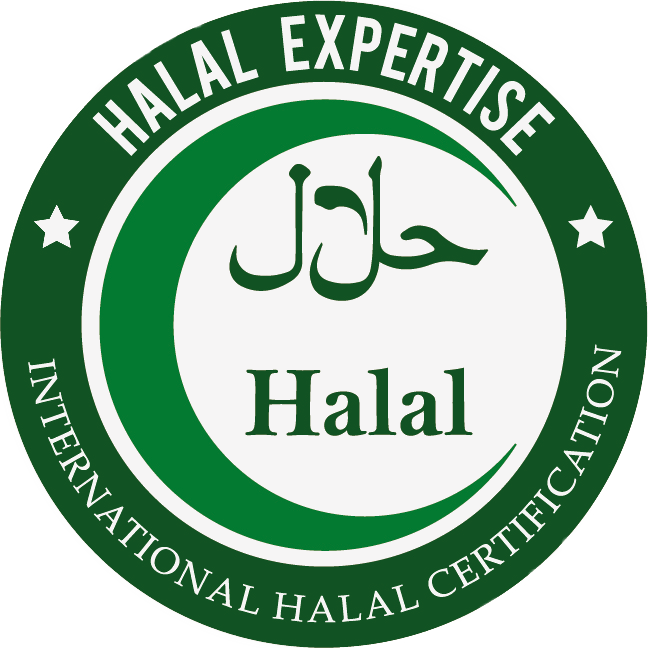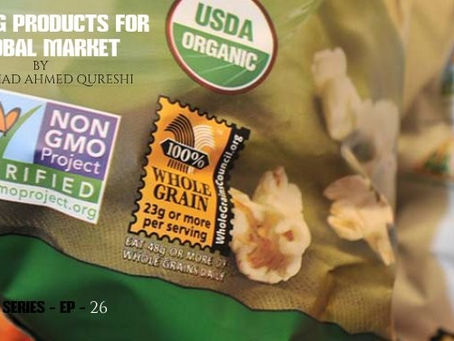This article especially deals with many aspects of food production that wrap around the food in different ways. These varied aspects might seem unrelated and out of place here, but these are peripheral issues that touch the food and Muslim consumers’ psyche one way or the other. The following topics will be briefly dealt with in this article:
Labeling products for Muslim markets
Halal issues in labels and printing
Packaging food in a halal environment
Packaging materials and containers
Waxes, coatings, and edible films
Labels are for the benefit of the consumer and should be quite descriptive, clear, and meaningful. Usually the ingredient label does not list the origin of the ingredients. Hidden ingredients such as processing aids, anticaking agents, carriers, and incidental ingredients from various sources present another serious problem for
Muslim consumers. For example, magnesium or calcium stearates are used in the manufacturing of candy and chewing gum without mention of the origin of the stearates. Some European manufacturers use up to 5% vegetable or animal fat in their product and are still able to label it pure chocolate. In many cases, it is not feasible to list every major and minor ingredient on the label. Halal certification of the product and proper halal markings and logos can clarify the doubt for consumers.
If alcohol is a part of the food composition or formulation, then alcohol must be included on the label as an ingredient. If alcohol is a part of other ingredients, then it comes under incidental ingredients. Some incidental additives are present in food at insignificant levels and do not have any technical or functional effect in the food and are exempt from food labeling requirements. These two issues in labeling that concern Muslims, the hidden ingredients and the questionable ingredients, can both be addressed through halal certification and proper labelling and markings.
With placement of the certified halal symbol on food items, Muslims no longer need to memorize a list of mysterious E-numbers in Europe and chemical jargon in the U.S. each time they go shopping. It must be noted, however, that marked items are not the only halal items present, but the only ones that have been checked, confirmed, and certified.
One of the functions of food labeling regulations is to ensure that consumers receive adequate information about the food products to make the right personal choices, whether these choices are economic, philosophic, or health related. Through proper labeling, consumers can make a comparison between competing products, can avoid foods they may be allergic to, or, in many cases, verify the ingredient status as halal, haram, or doubtful. For example, if the label reads that a product contains lard, it is haram. In the same way, if the label reads that a product contains gelatin, it is doubtful because most of the time the source of gelatin is not revealed, although sometimes the company might reveal the source of gelatin as a fish or bovine source. If the food product containing gelatin is certified as halal by a reputable organization, Muslim consumers can buy the product without hesitation.
The information on a food package label in the U.S. can be divided into three types. The first is the mandatory information required by the Fair Packaging and Labeling Act and the Nutrition Labeling and Education Act, as well as the Food, Drug, and Cosmetic Act, and others. The second type of information is optional or voluntary information, but often regulated if present. The third is information that is provided by the manufacturer to help the consumer use or understand the product. This last type contains such information as instructions for preparation and additional recipes along with religious and philosophical certifications. The information appearing on a label is as follows:
Food Name — all food must be labeled on the principle display panel (PDP) with the common or usual name.
Net Quantity of Content — tells consumers how much food is in the package or can.
Ingredients — listing of all ingredients in descending order by weight is required by the labeling law except the ones that are less than 2% of the product, which could be listed in any order. If there is no halal marking or symbol on the label, then halal consumers generally look for information about the ingredients. But this remains a very unreliable way to judge food products and never deals with the condition in the manufacturing facility. Some of the minor ingredients as discussed earlier might not be revealed on the label and the product might have been manufactured on a product line where non-halal products were also made, for example, making canned peas on the same line as canned pork and beans.
Company Name — company name and address must be present on the label for consumer inquiries. This information helps Muslim consumers who care to write to the company to find out the status of several doubtful ingredients in the absence of halal markings. Company name and address should be complete and up-to-date for consumers, so that they can reach the company for information about the halal status of the ingredients or the halal status of the products.
Product Date — may be shown as expiration date, date food was packaged, or other codes.
Nutrition Information — nutrition-related information regulated on the packaging label are nutrition facts, nutrient content claims, and health claim (copy of nutrition information panel plus explanation).
Other Information — voluntary information provided by food companies, such as trademarks or copyright symbols and religious symbols, to indicate that the product has qualified for halal and kosher certification. Figure 15.1 shows a sample label with halal markings and Figure 15.2 one that is dual halal and kosher certified.
Specific Terminology — sometimes used to clarify words for a certain reason. “Red wine vinegar” might be a positive gourmet statement in the Western countries, but it is not viewed favorably by Muslim consumers, although there is no wine or significant amount of alcohol left in this product. Some people might think that all derivatives of alcohol/wine are haram and might not purchase a product containing wine vinegar (red or white). It is better to label the ingredients as flavored vinegar in these countries. Ingredients such as lecithin, mono- and diglycerides, and glycerine can be from animal or vegetable sources. Generally, the source is not identified on labels. If these ingredients were purely vegetable driven, then identifying them as vegetable mono- and diglycerides, soy lecithin, and plant glycerin, for example, would increase the chances of Muslim and vegetarian consumers. However, the best option available to the company is to have the product certified as halal and vegetarian by a reputable organization. Additionally, if the target market is other than English-speaking customers, then it will be prudent to make the labels bilingual or even multilingual, which should include appropriate marking from the halal certifying agencies.




